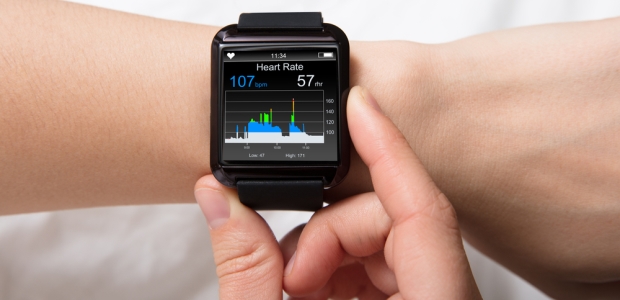
Wearable Sensors: 'Tremendous Opportunity,' Some Challenges
Potential benefits of the technologies include preventing and mitigating injuries, decreasing the extent and duration of disability, enhancing employee wellness, and improving productivity. Injury prevention studies of wearable technologies' effect are rare, however, and employee acceptance of them could be an implementation challenge, two speakers said during an AIHce EXP 2019 session.
MINNEAPOLIS -- Wearable sensor technologies offer a "tremendous opportunity" for predictive modeling and risk analysis/evaluation by safety and ergonomics practitioners, but there are some challenges to overcome in implementing them successfully, two experts said during a May 22 session at the AIHce EXP 2019 conference here. Wayne Maynard, CSP, CPE, ALCM, of Liberty Mutual Insurance, and John Snawder, Ph.D., DABT, of NIOSH discussed how to address ethical concerns and some workers' reluctance to wear sensors that can be used to measure everything from steps taken, heart rate, and sleep patterns to hydration, joint movement, falls, and more.
More than two years ago, NIOSH offered a proposed ethical framework for making decisions on employee monitoring, and the two speakers echoed some of its recommendations, stressing that the goals of the monitoring must be explained to employees and their voluntary consent to the monitoring is essential before proceeding.
Maynard said the potential benefits of the technologies include preventing and mitigating injuries, decreasing the extent and duration of disability, enhancing employee wellness, and improving costs and productivity. Both speakers said employers are interested in using the technologies, but so far most are not going beyond pilot programs, Maynard said. Injury prevention studies of wearable technologies' effect are rare, and employee acceptance of them could be an implementation challenge, he explained.
"Know what you're buying and ask questions, because right now, this seems too reactive. There's so much implementation and prep work that's part of this technology," he said. "We need better accuracy [by wearables to be used in workplaces] than what is currently available from consumer products."
He cited a study on employee acceptance of wearables by Jesse Jacobs and colleagues at the Oregon Institute of Occupational Health Sciences that was published in Applied Ergonomics in March 2019 and pointed out that having a strong safety climate is a predictor of acceptance. "This isn't a strategy you just roll out. There has to be some acceptance," he said.
Snawder cited several questions for employers to ask when considering the use of a wearable technology: Is it accurate? Is it measuring what it's supposed to? Can we calibrate and validate it? The technology will provide a ton of data, so the employer should have confidence it can feasibly analyze that data, he said. Saying employers should anticipate and avoid, or at least minimize, potential adverse consequences and should obtain employees' voluntary consent (opt-in) before implementing wearable sensors, he explained that the employer should ensure the worker who will be monitored has control.
He said employers should realize that if data they obtain from wearables are used for external reporting, they may be required to retain the data for 30 years and in some cases may have to turn the data over to law enforcement.